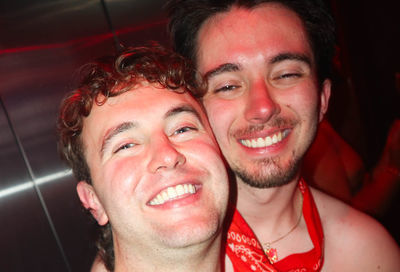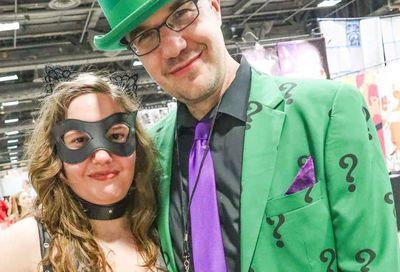Coming Unglued
Commentary: Center Field
Walking along U Street Northwest on the anniversary of Martin Luther King’s assassination, there is little sign that the neighborhood was on fire forty years ago. Ben’s Chili Bowl, one of the few establishments that survived the riots, has been joined in the past decade by a host of new restaurants and upscale apartments. The boom has brought gentrification and its attendant displacement of longstanding residents, though the area remains ethnically diverse.
My father attended nearby Cardozo High School in the 1930s when it was the all-white Central High. Central became Cardozo in 1950 when it was transferred to the Colored School District to relieve overcrowding as the city’s white population shrank and the black population grew. I have heard unscrupulous realtors blamed for the ”white flight” that took with it development capital in the postwar years, but the prejudice was there to be exploited.
Thoughts of decay and renewal, and the sad King anniversary, bring to mind Langston Hughes’ musing on a dream deferred: ”Maybe it just sags / like a heavy load. / Or does it explode?” The dream exploded in Los Angeles in 1992 when a jury acquitted four police officers videotaped beating Rodney King. It exploded in San Francisco in 1979 when Dan White, who killed Mayor George Moscone and Supervisor Harvey Milk, was convicted only of manslaughter.
On White Night, as the 1979 riot is known, angry gays set fire to a dozen police cars, and police retaliated by storming into the Elephant Walk at 18th and Castro and smashing everything and everyone in sight. A decade earlier on the opposite coast, anti-police riots outside a Greenwich Village bar became a flashpoint for a gay movement already nearly two decades old. Stonewall may have served as a rallying cry, but provided no guidance on what came next.
America saw riots decades before the turmoil of the 1960s, but they were by whites against blacks. Those riots included Springfield, Ill., in 1908; East St. Louis in 1917; Chicago in 1919; and Rosewood, Fla., in 1923. The Springfield riot provoked a multiracial group that included W.E.B. DuBois, Mary Church Terrell and Henry Moskowitz to create the NAACP, which turns 100 next year.
A key factor in social cohesion is trust. Race riots in the early 20th Century were fueled by false reports resembling the plot of Birth of a Nation (in which an evil half-breed threatens to ravage Lillian Gish). These days, it is hard to see how public trust survives the mutual alienation stoked by partisans who ascribe the worst possible motives to their opponents. The accelerated pace of cable news encourages this race to the bottom in which the informative and enlightening are routinely passed over for the sensational.
Another factor is hope. When a population loses all hope of justice, as happened with the White verdict and the King murder, ties to civic order are cut. Community explosions are not rational acts, but acts of rage and despair. The fuse is often a slow one. When my black ex-boyfriend, a successful executive, describes how he arouses suspicion and unease in strangers merely by walking into elevators and department stores — that is, merely by being black and going about his business — I wonder how he avoids being constantly enraged.
At the same time, we have seen that nobler instincts can also be stirred. In 1978, on the night Moscone and Milk were killed, the public response was not violence but a massive candlelight march up Market Street from the Castro to City Hall. On April 4, 1968, Bobby Kennedy was in Indianapolis for a campaign event, but instead had to announce King’s death. He said, ”In this difficult day, in this difficult time for the United States, it’s perhaps well to ask what kind of a nation we are.” In contrast to Stokely Carmichael, who was in Washington inciting a mob at 14th and U Streets, Kennedy urged the crowd to emulate King by returning love for hatred and rejecting violence. As cities across the country boiled over, Indianapolis remained calm.
Leaders like Martin and Bobby are rare, and we cannot wait for them. We build community in small moments of recognition and affirmation. The streets we walk bear the marks of past struggles. Learning from them enables us to teach, to touch, and to heal.
Richard J. Rosendall is a writer and activist whose work has appeared on Salon.com and the Independent Gay Forum (www.indegayforum.org). He can be reached at rrosendall@starpower.net.
Support Metro Weekly’s Journalism
These are challenging times for news organizations. And yet it’s crucial we stay active and provide vital resources and information to both our local readers and the world. So won’t you please take a moment and consider supporting Metro Weekly with a membership? For as little as $5 a month, you can help ensure Metro Weekly magazine and MetroWeekly.com remain free, viable resources as we provide the best, most diverse, culturally-resonant LGBTQ coverage in both the D.C. region and around the world. Memberships come with exclusive perks and discounts, your own personal digital delivery of each week’s magazine (and an archive), access to our Member's Lounge when it launches this fall, and exclusive members-only items like Metro Weekly Membership Mugs and Tote Bags! Check out all our membership levels here and please join us today!





















